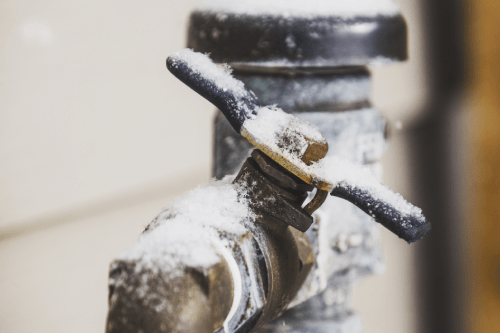Key Strategies for Avoiding Frozen Pipes in Cold Weather
Key Strategies for Avoiding Frozen Pipes in Cold Weather
Blog Article
Were you in search of suggestions about Winter Plumbing Precautions: Preventing Frozen Pipes?

Cold weather can ruin your plumbing, particularly by freezing pipelines. Right here's how to avoid it from taking place and what to do if it does.
Introduction
As temperatures decrease, the threat of frozen pipes rises, possibly resulting in expensive repair work and water damage. Comprehending how to prevent icy pipes is vital for home owners in cool climates.
Comprehending Frozen Pipes
What creates pipes to ice up?
Pipes ice up when subjected to temperature levels listed below 32 ° F (0 ° C) for expanded durations. As water inside the pipes freezes, it increases, putting pressure on the pipe walls and potentially triggering them to rupture.
Dangers and problems
Frozen pipes can cause water system disruptions, residential property damage, and expensive repair work. Burst pipelines can flood homes and cause comprehensive architectural damages.
Indications of Frozen Piping
Determining frozen pipelines early can prevent them from breaking.
Just how to identify frozen pipelines
Try to find decreased water circulation from taps, unusual smells or noises from pipes, and visible frost on subjected pipelines.
Prevention Tips
Shielding vulnerable pipes
Wrap pipes in insulation sleeves or make use of warm tape to shield them from freezing temperatures. Focus on pipes in unheated or external locations of the home.
Home heating strategies
Maintain interior spaces appropriately heated up, especially areas with plumbing. Open closet doors to permit warm air to circulate around pipes under sinks.
Securing Outdoor Plumbing
Garden hoses and outside taps
Separate and drain yard pipes before winter season. Install frost-proof faucets or cover outdoor taps with insulated caps.
What to Do If Your Pipelines Freeze
Immediate actions to take
If you presume frozen pipes, keep taps open up to alleviate stress as the ice melts. Use a hairdryer or towels soaked in hot water to thaw pipelines gradually.
Long-Term Solutions
Architectural adjustments
Think about rerouting pipes away from exterior walls or unheated areas. Add extra insulation to attics, basements, and crawl spaces.
Upgrading insulation
Buy top quality insulation for pipes, attic rooms, and wall surfaces. Appropriate insulation aids keep constant temperature levels and lowers the threat of frozen pipelines.
Final thought
Protecting against icy pipes calls for positive procedures and fast actions. By recognizing the reasons, signs, and safety nets, homeowners can secure their pipes during cold weather.
Helpful Tips to Prevent Frozen Pipes this Winter
UNDERSTANDING THE BASICS: WHY PIPES FREEZE AND WHY IT’S A PROBLEM
Water freezing inside pipes is common during the winter months, but understanding why pipes freeze, and the potential problems it can cause is crucial in preventing such incidents. This section will delve into the basics of why pipes freeze and the associated problems that may arise.
THE SCIENCE BEHIND FROZEN PIPES
When water reaches freezing temperatures, it undergoes a physical transformation and solidifies into ice. This expansion of water as it freezes is the primary reason pipes can burst. As the water inside the pipe freezes, it expands, creating immense pressure on the walls. If the pressure becomes too great, the pipe can crack or rupture, leading to leaks and water damage.
FACTORS THAT CONTRIBUTE TO PIPE FREEZING
Low Temperatures: Extremely cold weather, especially below freezing, increases the risk of pipes freezing. Uninsulated or Poorly Insulated Pipes: Pipes located in unheated areas, such as basements, crawl spaces, or attics, are more prone to freezing. Insufficient insulation or lack of insulation altogether exacerbates the problem. Exterior Wall Exposure: Pipes running along exterior walls are susceptible to freezing as they encounter colder temperatures outside. Lack of Heating or Temperature Regulation: Inadequate heating or inconsistent temperature control in your home can contribute to frozen pipes. PROBLEMS CAUSED BY FROZEN PIPES
- Pipe Bursting: As mentioned earlier, the expansion of water as it freezes can cause pipes to burst, resulting in significant water damage.
- Water Damage: When pipes burst, it can lead to flooding and water damage to your property, including walls, ceilings, flooring, and personal belongings.
- Structural Damage: Prolonged exposure to water from burst pipes can compromise the structural integrity of your home, leading to costly repairs.
- Mold and Mildew Growth: Excess moisture from water damage can create a favorable environment for mold and mildew growth, posing health risks to occupants.
- Disrupted Water Supply: Frozen pipes can also result in a complete or partial loss of water supply until the issue is resolved.
WHY CERTAIN PIPES ARE MORE PRONE TO FREEZING
- Location: Pipes located in unheated or poorly insulated areas, such as basements, crawl spaces, attics, or exterior walls, are at higher risk of freezing.
- Exterior Pipes: Outdoor pipes, such as those used for irrigation or exposed plumbing, are particularly vulnerable to freezing as they are directly exposed to the elements.
- Supply Lines: Pipes that carry water from the main water supply into your home, including the main water line, are critical to protect as freezing in these lines can affect your entire plumbing system.
- Underground Pipes: Pipes buried underground, such as those connected to sprinkler systems or outdoor faucets, can be susceptible to freezing if not properly insulated.
https://busybusy.com/blog/helpful-tips-to-prevent-frozen-pipes-this-winter/

We had been guided to that report about Preventing and dealing with frozen pipes from a pal on our other web property. Enjoyed reading our posting? Please quickly share it. Let other people discover it. I praise you for your time. Don't hesitate to check up our website back soon.
Click For More Information Report this page